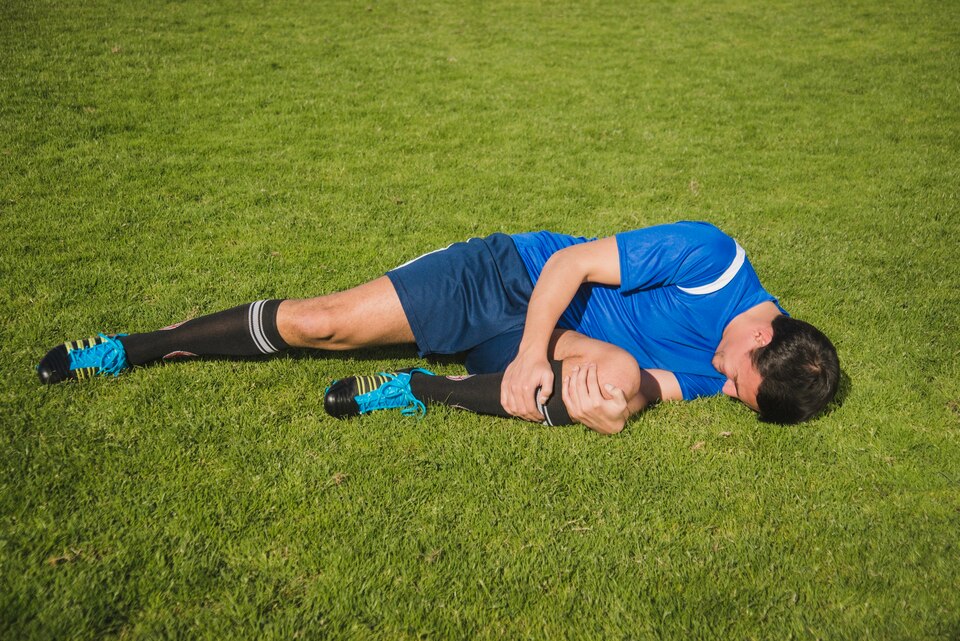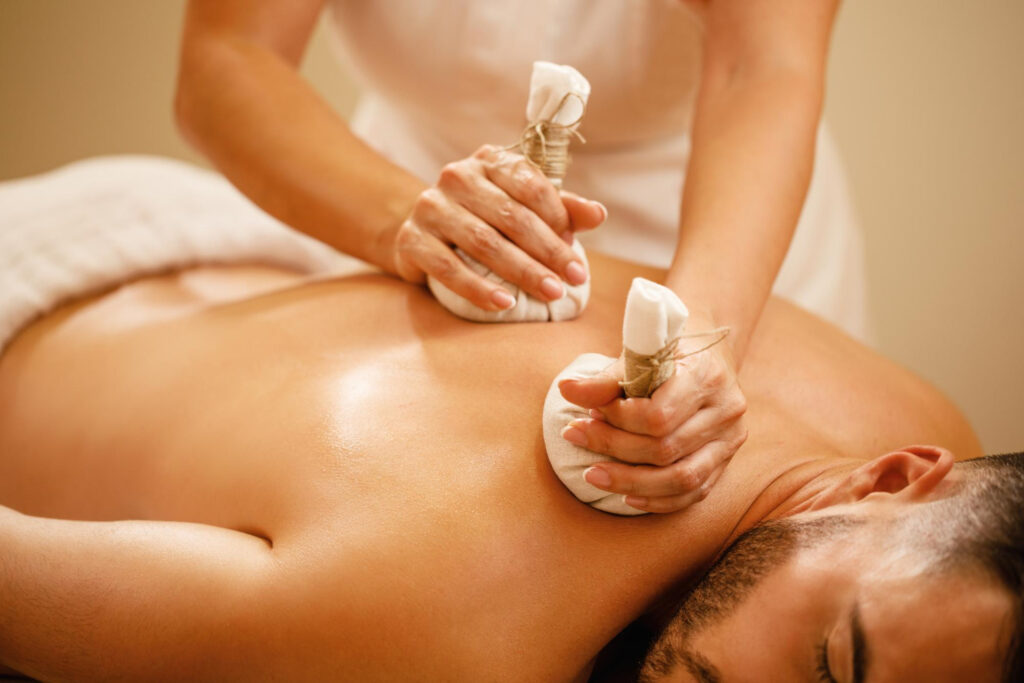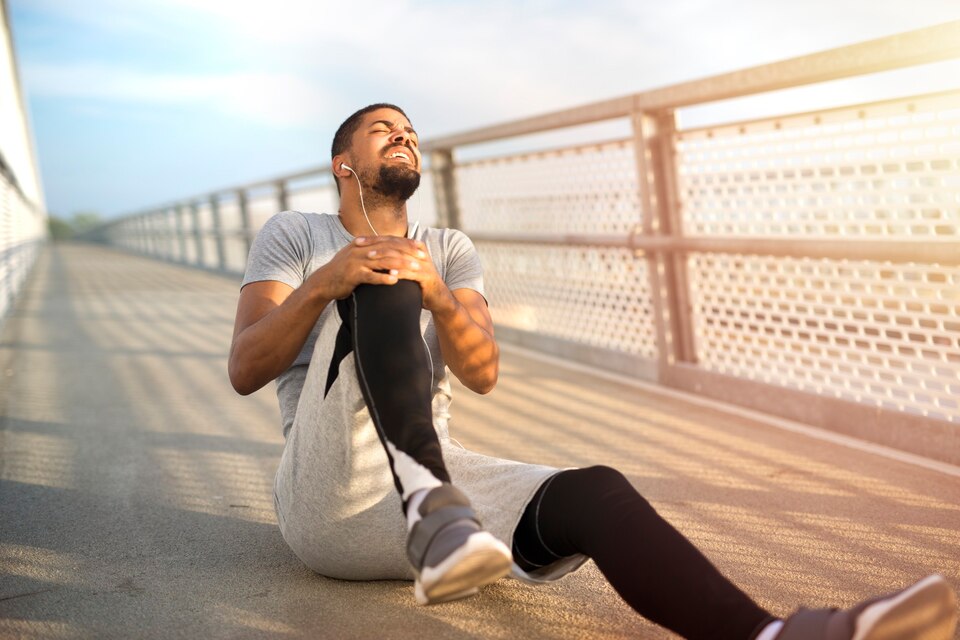Ayurveda plays a significant role in the management of sports injuries. Sports injuries are a common occurrence in the world of athletics, ranging from minor sprains to more severe fractures and chronic conditions. While conventional treatments like physiotherapy, surgery, and allopathic medicine have been the go-to options, there is a growing interest in natural, holistic, and sustainable approaches to healthcare. Ayurveda, an ancient Indian science of life, offers a unique perspective on managing sports injuries with ayurveda and promoting overall well-being.

Ayurvedic Principles and Healing:
Ayurveda takes a natural approach to healing and emphasizes the importance of balance in both the physical and emotional aspects of the body. By combining herbal medicine, dietary adjustments, lifestyle modifications, and physical treatments such as massages and yoga, Ayurveda supports the healing process and enhances recovery.
Understanding Sports Injuries and the Musculoskeletal System:
Sports injuries commonly affect the musculoskeletal system, which comprises bones, muscles, tendons, and ligaments. These injuries can result from acute trauma such as collisions, falls, or improper movements, as well as from overuse and repetitive stress on specific body parts. Common examples include sprains, strains, knee injuries, fractures, dislocations, and ailments affecting the Achilles tendon, shin bone, and rotator cuff. Athletes engaged in high-impact or repetitive sports may also experience chronic conditions like tennis elbow, runner’s knee, and stress fractures.
Role of Ayurveda in Managing Sports Injuries:
With a history spanning 5,000 years, Ayurveda offers a comprehensive treatment approach for sports injuries. It focuses on alleviating symptoms while identifying and addressing the root causes of the problem. Ayurveda views the human body as a balanced integration of body, mind, and spirit, and disruptions in this balance can lead to illness or injury. By rectifying imbalances in the Doshas—Vata (movement and communication), Pitta (metabolism and digestion), and Kapha (structure and lubrication)—Ayurveda enhances the body’s natural healing capabilities and promotes overall well-being.

General Treatment Approach:
Ayurvedic treatment for sports injuries involves a personalized combination of therapeutic measures tailored to an individual’s body constitution, injury type, severity, and overall health condition. The approach includes the following elements:
1. Dietary Adjustments: Ayurveda underscores the role of a balanced diet in maintaining health and supporting recovery. Specific dietary recommendations may be provided based on the Dosha imbalance. For example, an anti-inflammatory diet rich in turmeric, ginger, and omega-3 fatty acids can aid in managing inflammation and expediting recovery.
2. Herbal Remedies: Ayurvedic medicine incorporates various herbal remedies to address injuries. Herbs such as Ashwagandha and Guggul are often recommended for their anti-inflammatory and analgesic properties, while Boswellia is beneficial for managing arthritis and joint pains.
3. Panchakarma: Panchakarma, a detoxification and rejuvenation procedure, can be highly beneficial for sports injuries. It involves treatments like oil massages (Abhyanga), steam therapy (Swedana), and therapeutic purgation (Virechana) to eliminate toxins, enhance circulation, and restore balance in the body.
4. Yoga and Exercise: Ayurveda advocates specific physical exercises, including yoga, to strengthen the body, improve flexibility, and prevent further injuries. Yoga poses like the Mountain pose, Bridge pose, and Warrior pose aid in rehabilitating injured areas and maintaining overall body balance.
5. Lifestyle Modifications: Ayurveda emphasizes making necessary lifestyle changes to support recovery and prevent future injuries. This may include proper rest, stress management, and adhering to a routine aligned with the natural circadian rhythm.
6. Marma Therapy: Marma points are vital areas where structures meet, such as joints, muscles, and tendons. Gentle stimulation of these points can stimulate healing, reduce pain, and alleviate swelling.
Conclusion:
Ayurveda offers a holistic, non-invasive, and natural approach to managing sports injuries. It aims to heal injuries, promote overall well-being, and assist athletes in bouncing back stronger and performing better. It is important to seek guidance from qualified Ayurvedic practitioners to ensure the safety and effectiveness of any treatment. Always consult a professional for personalized advice tailored to your specific needs. To know more information just checkout our services : Ayurvedic treatment for sports injuries.

Leave a Reply